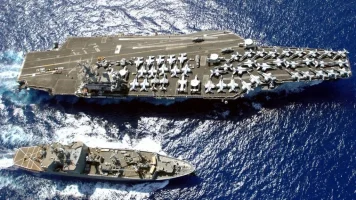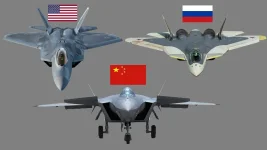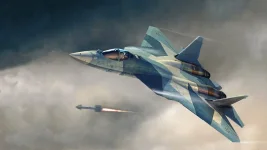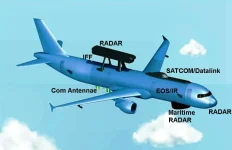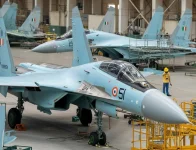- Views: 6K
- Replies: 27
Reports surfacing on Chinese social media platforms suggest significant discontent within Pakistan regarding the performance of its Chinese-supplied HQ-9B and HQ-16 air defence systems.
This frustration has reportedly intensified following an admission by Chinese manufacturers that these systems are not designed to intercept advanced supersonic missiles like India's BrahMos, particularly after their perceived failure during a recent military engagement.
The concerns prominently arose after "Operation Sindoor," a reported India-Pakistan skirmish between May 7 and May 10, 2025. During this period, India is said to have launched precision strikes against terrorist locations and Pakistani military installations. These actions were in retaliation for a terrorist incident in Pahalgam that resulted in 26 civilian deaths.
Indian forces were described as using a variety of advanced weaponry, notably the BrahMos supersonic cruise missile. The BrahMos, a collaborative development between India and Russia, is known for its high speed (approaching Mach 3, or three times the speed of sound), low-altitude flight capabilities, and sustained destructive power through its final attack phase, presenting a significant challenge to air defence capabilities.
Pakistan's air defence infrastructure, which heavily relies on Chinese systems such as the long-range HQ-9B and the medium-range HQ-16, reportedly failed to detect or counter the incoming Indian missiles. This exposed critical vulnerabilities in Pakistan's defence shield.
Reports indicated that Indian strikes, which also involved French-made SCALP cruise missiles and Harop loitering munitions, successfully neutralized key Pakistani airbases and a Chinese-supplied YLC-8E anti-stealth radar system located in Chunian, Punjab. The inability of the HQ-9B and HQ-16 systems to counter these assaults has led to widespread criticism.
According to information circulating on Chinese online forums, Pakistani military officials have formally conveyed their dissatisfaction to the Chinese defence manufacturers. They highlighted the underperformance of the HQ-9B and HQ-16 systems in actual combat conditions.
The HQ-9B, marketed by China as a competitor to the American Patriot missile system with an engagement range of 250-300 kilometres, and the HQ-16, designed to intercept targets at low to medium altitudes up to 40 kilometres, were considered vital elements of Pakistan’s Comprehensive Layered Integrated Air Defence (CLIAD).
However, during the "Operation Sindoor," these systems were allegedly bypassed, subjected to electronic jamming, or destroyed by Indian forces employing sophisticated electronic warfare tactics and precision-guided weapons.
In response to these complaints, Chinese manufacturers reportedly clarified that the HQ-9B and HQ-16 air defence systems were not engineered to neutralize high-speed, low-flying missiles like the BrahMos, which maintains its Mach 3 velocity throughout its terminal phase.
Unlike some cruise missiles that may reduce speed or maneuverability in their final approach, the BrahMos's ramjet engine and relatively flat flight path make it exceptionally difficult to intercept.
This explanation, however, has reportedly not alleviated Pakistan's concerns, with some officials feeling that previous Chinese assertions about the systems' capabilities were misleading.
Reactions on Chinese social media have been varied. Some commentators defended the Chinese systems, suggesting that operational errors and insufficient training on the Pakistani side were to blame, rather than inherent flaws in the military hardware.
Conversely, others expressed dismay, pointing out that the systems' failures have negatively impacted China's reputation as a dependable arms supplier. This is particularly significant as Pakistan sources approximately 82% of its defence imports from China, making it a crucial market for Beijing's defence industry.
The HQ-9B is a long-range surface-to-air missile (SAM) system intended to engage aircraft, cruise missiles, and tactical ballistic missiles. It is publicly stated to have a range of up to 300 kilometres and the capacity to engage multiple targets at once.
The HQ-16 (also known by its export designation LY-80) is a medium-range SAM, primarily designed to counter low-altitude threats such as cruise missiles and unmanned aerial vehicles, with a stated range of 40 kilometres.
Both systems are integrated into Pakistan's air defence network and are supported by various radar systems, including the IBIS-150 and YLC-8E. They were promoted as capable of providing a robust shield against advanced aerial threats, including aircraft like India's Rafale jets and missiles such as the BrahMos.
However, the unique characteristics of the BrahMos missile – its high velocity, low-altitude trajectory, and manoeuvrability – appear to have proven too challenging for these Chinese systems. The missile's speed and flight path make it difficult for radar systems to achieve timely detection and tracking necessary for interception.
Furthermore, it is suggested that India's employment of Suppression of Enemy Air Defences (SEAD) tactics, which could include radar jamming and the use of loitering munitions like the Israeli-origin Harop, likely incapacitated key elements of Pakistan's air defence network, thereby rendering the HQ-9B and HQ-16 ineffective.
An incident in March 2022, where an unarmed BrahMos missile inadvertently flew into Pakistani territory for 124 kilometres without being intercepted, had previously raised questions about the effectiveness of Pakistan's air defences. While Pakistani authorities claimed to have tracked the missile, no interception was attempted, highlighting potential gaps in their capabilities.
Analysts have also pointed out that the truck-mounted design of the HQ-16 and its dependence on separate guidance radar vehicles might restrict its mobility and operational effectiveness in challenging terrains, such as Pakistan's mountainous border regions.
The reported underperformance of the HQ-9B and HQ-16 systems carries broader implications for Pakistan's national defence strategy and China's position in the international arms market.
Pakistan has acquired nearly $20 billion worth of Chinese armaments, including J-10C and JF-17 fighter jets, PL-15 air-to-air missiles, and Wing Loong-II armed drones. The perceived failures during "Operation Sindoor" could represent a considerable setback for Beijing's ambitions as a major defence exporter.
Additional reports alleging that other Chinese systems, such as the PL-15 missile, failed to engage targets effectively and the YLC-8E radar was destroyed, have further deepened concerns about the reliability of Chinese military technology.
In light of these events, Pakistan is reportedly considering diversifying its sources for air defence systems. There is indicated interest in Turkish systems like the SİPER 1 and SİPER 2, which are claimed to offer enhanced radar and guidance capabilities, as well as greater resilience against electronic countermeasures. Such a move would signal growing dissatisfaction with Chinese-supplied systems.
For China, the public criticism on social media and the direct complaints from Pakistan present a challenge to its image as a credible alternative to Western and Russian arms suppliers.
The HQ-9B's comparison to the US Patriot system, which has seen documented operational successes in conflicts such as in Ukraine, is now being critically examined.
The perceived shortcomings of Chinese systems in Pakistan may also influence China's own air defence posture, as the People’s Liberation Army (PLA) deploys similar technologies, including reportedly close to 300 HQ-9 variants, for its own national defence.

